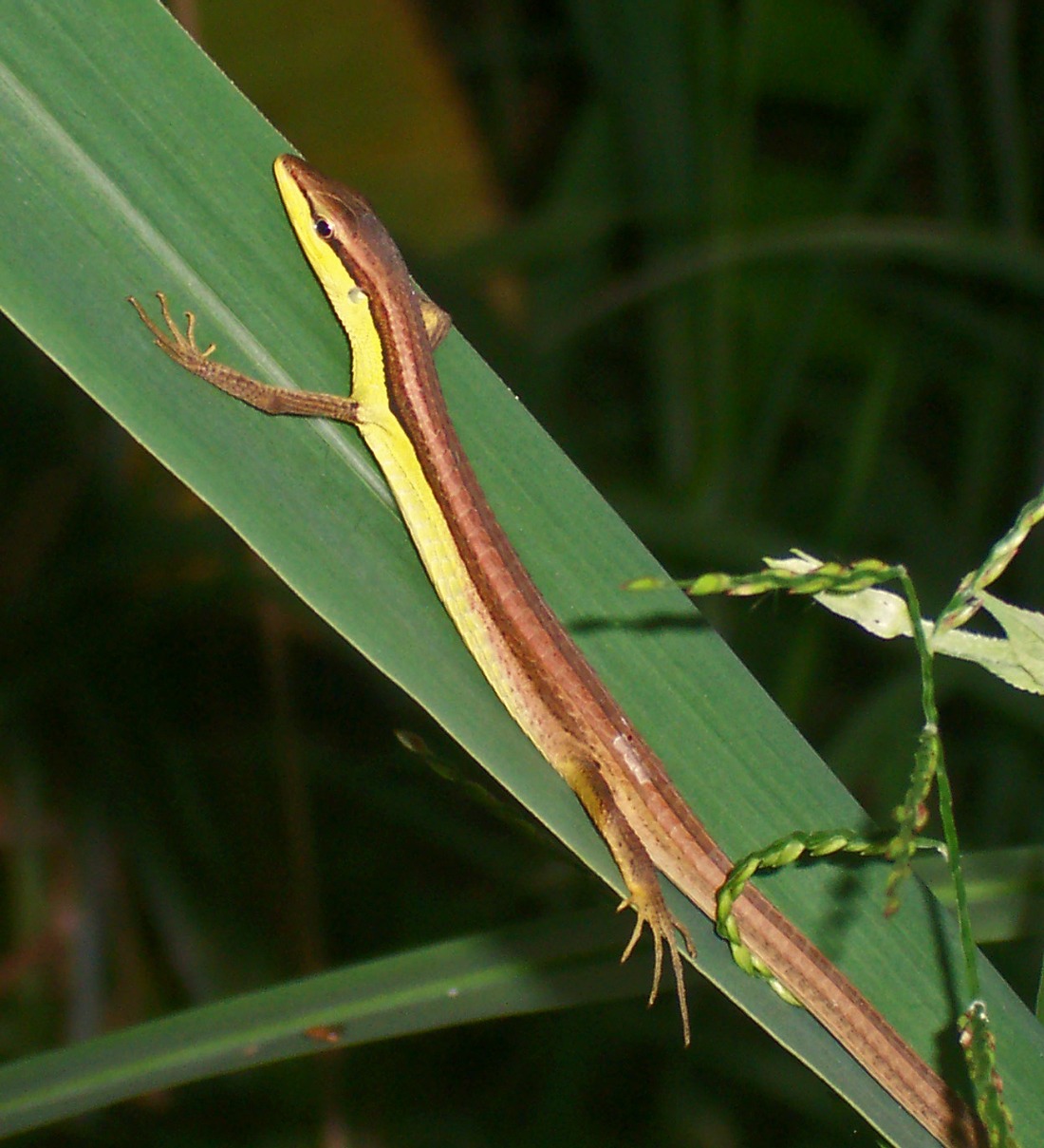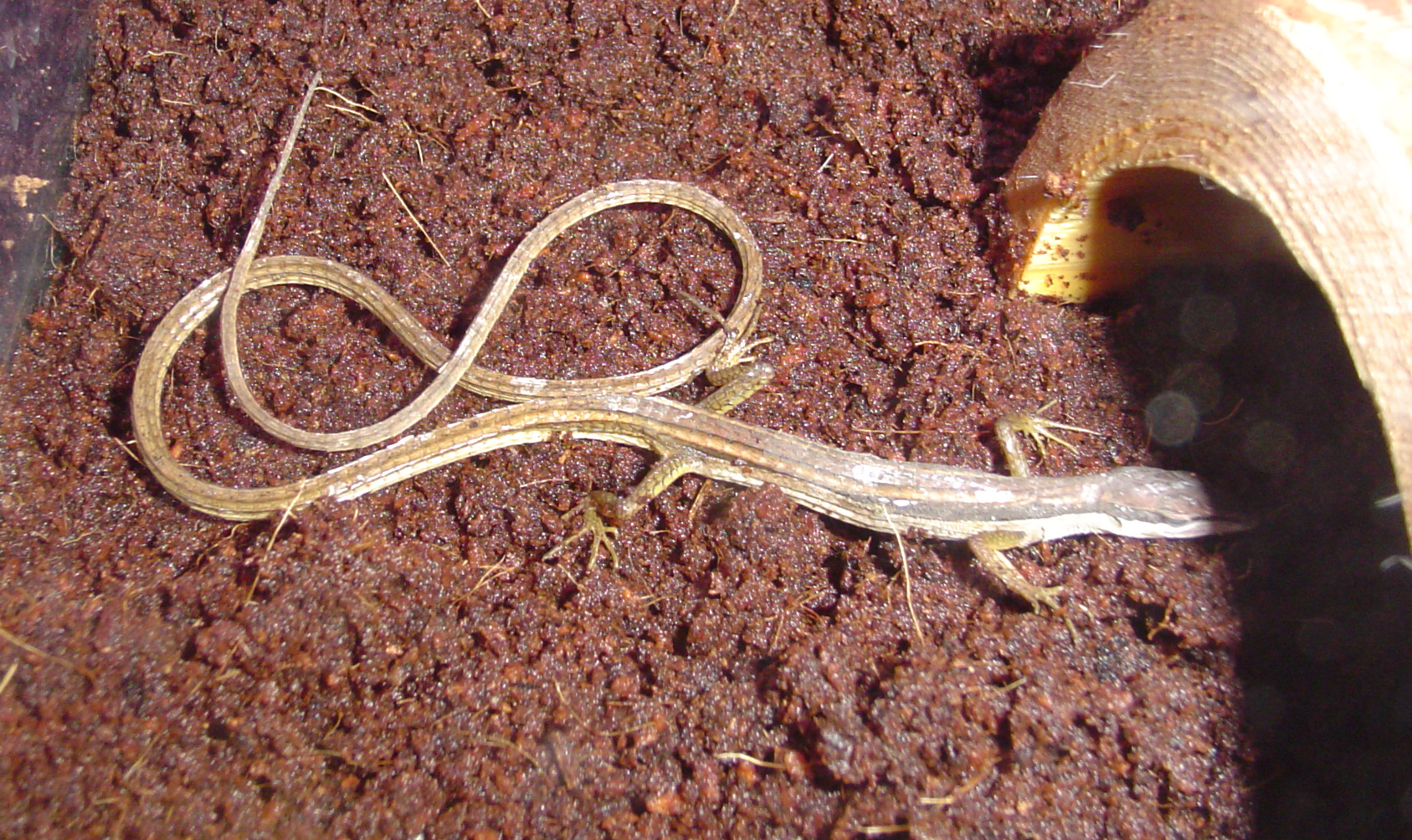Takydromus Sexlineatus on:
[Wikipedia]
[Google]
[Amazon]
''Takydromus sexlineatus'', the Asian grass lizard, six-striped long-tailed grass lizard, or long-tailed grass lizard, is an arboreal, diurnal species of
 ''Takydromus sexlineatus'' is found throughout South East Asia, and is native to a number of countries including India, China, Thailand, and Indonesia. The subspecies ''ocellatus'' is found in areas such as southern China, north Burma and north Malaysia.
''Takydromus sexlineatus'' is found throughout South East Asia, and is native to a number of countries including India, China, Thailand, and Indonesia. The subspecies ''ocellatus'' is found in areas such as southern China, north Burma and north Malaysia.
 These are entirely diurnal lizards that emerge in the early morning to bask in the sun. If a potential predator approaches they will first remain completely still, and then if the danger persists, they will flee to the safety of foliage. Both sexes use arm-waving gestures (similar to a front crawl swimming action), apparently to communicate with each other. They are very agile and fast.
These are entirely diurnal lizards that emerge in the early morning to bask in the sun. If a potential predator approaches they will first remain completely still, and then if the danger persists, they will flee to the safety of foliage. Both sexes use arm-waving gestures (similar to a front crawl swimming action), apparently to communicate with each other. They are very agile and fast.
 ''Takydromus sexlineatus'' feeds on small insects such as flies, In captivity they can be reared on crickets and like other small lizards may require a calcium substitute. It is advisable in captivity to vary food including
''Takydromus sexlineatus'' feeds on small insects such as flies, In captivity they can be reared on crickets and like other small lizards may require a calcium substitute. It is advisable in captivity to vary food including
lizard
Lizards are a widespread group of squamate reptiles, with over 7,000 species, ranging across all continents except Antarctica, as well as most oceanic island chains. The group is paraphyletic since it excludes the snakes and Amphisbaenia alt ...
. The tail length is usually over three times the body (snout to vent) length in this species.
Males and females are similar, males being distinguishable by the presence of pre-anal pores. On average they grow to around snout-to-vent length, with the addition of a distinctive, prehensile long tail. Some individuals may have small circular spots on the sides of the bodies. This species of lizard is often kept as a pet.
Like geckos they can drop their tail and grow a new one when attacked.
Appearance
The long-tailed grass lizard is easily identifiable by a long tail, and has a white to cream coloured underbelly with a brown, green or beige back, often adorned with brown stripes of different shades. It typically has a small head with a sharply pointed snout and black or pink tongue. Its body is slightly elongated and thin with small pointy scales beneath the chin resembling a beard. Males have white spots on their sides, while females do not. Males have tails that thicken past the vent and are generally thicker than the female's down the entire length of the tail. The light stripes on the length of the body are yellower than the female's, which are more cream coloured. They grow up to 12 inches (30 cm.) long, with the tail usually being three times their body length.Purser, Philip A. 2004 The Tiniest Dragon: The Oriental Long-Tailed Grass Lizard Takydromus sexlineatus. Reptilia (GB) (33): 67-71Distribution
 ''Takydromus sexlineatus'' is found throughout South East Asia, and is native to a number of countries including India, China, Thailand, and Indonesia. The subspecies ''ocellatus'' is found in areas such as southern China, north Burma and north Malaysia.
''Takydromus sexlineatus'' is found throughout South East Asia, and is native to a number of countries including India, China, Thailand, and Indonesia. The subspecies ''ocellatus'' is found in areas such as southern China, north Burma and north Malaysia.
Behavior
 These are entirely diurnal lizards that emerge in the early morning to bask in the sun. If a potential predator approaches they will first remain completely still, and then if the danger persists, they will flee to the safety of foliage. Both sexes use arm-waving gestures (similar to a front crawl swimming action), apparently to communicate with each other. They are very agile and fast.
These are entirely diurnal lizards that emerge in the early morning to bask in the sun. If a potential predator approaches they will first remain completely still, and then if the danger persists, they will flee to the safety of foliage. Both sexes use arm-waving gestures (similar to a front crawl swimming action), apparently to communicate with each other. They are very agile and fast.
Diet
 ''Takydromus sexlineatus'' feeds on small insects such as flies, In captivity they can be reared on crickets and like other small lizards may require a calcium substitute. It is advisable in captivity to vary food including
''Takydromus sexlineatus'' feeds on small insects such as flies, In captivity they can be reared on crickets and like other small lizards may require a calcium substitute. It is advisable in captivity to vary food including mealworms
Mealworms are the larval form of the yellow mealworm beetle, ''Tenebrio molitor'', a species of darkling beetle. Like all holometabolic insects, they go through four life stages: egg, larva, pupa, and adult. Larvae typically measure about or ...
, sterile maggot
A maggot is the larva of a fly (order Diptera); it is applied in particular to the larvae of Brachycera flies, such as houseflies, cheese flies, and blowflies, rather than larvae of the Nematocera, such as mosquitoes and crane flies.
...
s or waxworms in addition to crickets. Unlike some larger reptiles, these lizards have extremely fast reactions and have been observed jumping into the air to catch flying prey such as flies.
References
Further reading
* Arnold, E. N. 1997 Interrelationships and evolution of the east Asian grass lizards, ''Takydromus'' (Squamata: Lacertidae). Zoological Journal of the Linnean Society 119 (2) February, 1997, p 267-296 * Daudin, F. M. 1802 Histoire Naturelle, génerale et particulièredes reptiles, ouvrage faisant suite, a l'histoiure naturelle, générale et particulière composée par LECLERC DE BUFFON, et redigée par C. S. SONNINI, vol. 3. F. Dufart, Paris. * Ji, Xiang; Wenhui Zhou, Xiaodong Zhang and Huiqing Gu. 1998 Sexual dimorphism and reproduction in the grass lizard Takydromus septentrionalis. Russ. J. Herpetol. 5 (1): 44-48 * Lin, Si-Min; Chaolun Allen Chen and Kuang-Yang Lue 2002 Molecular Phylogeny and Biogeography of the Grass Lizards Genus ''Takydromus'' (Reptilia: Lacertidae) of East Asia. Molecular Phylogenetics and Evolution 22: 276-288 rratum in 26: 333* Purser, Philip A. 2004 The Tiniest Dragon: The Oriental Long-Tailed Grass Lizard Takydromus sexlineatus. Reptilia (GB) (33): 67-71 * Schlüter, U. 2003 Die Langschwanzeidechsen der Gattung ''Takydromus''. Kirschner & Seufer Verlag, 110 pp. eview in Draco 21: 91* Ziegler, Thomas, Wolfgang Böhme and Wolfgang Bischoff. 1999 Comments on the grass lizards (Lacertidae:Takydromus) of Vietnam and Myanmar. Hamadryad 24 (1): 39-42. {{Taxonbar, from=Q1277666 Takydromus Reptiles of Southeast Asia Reptiles of Thailand Reptiles described in 1802 Taxa named by François Marie Daudin